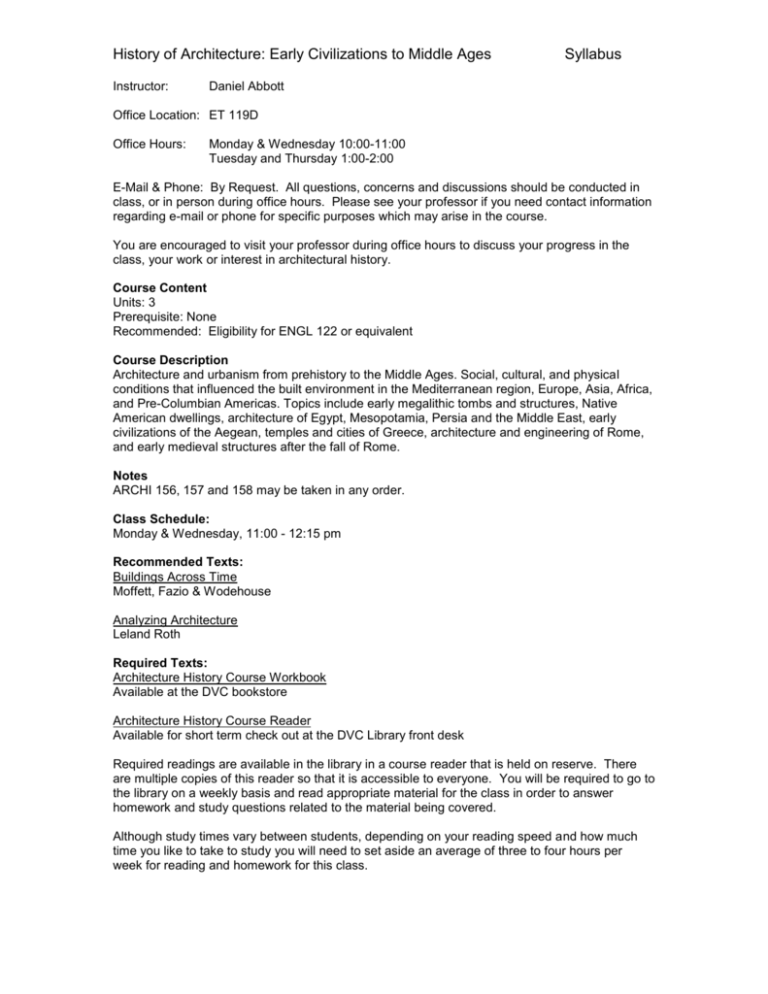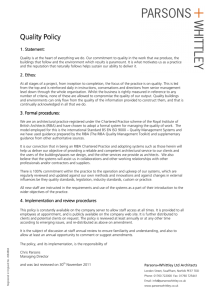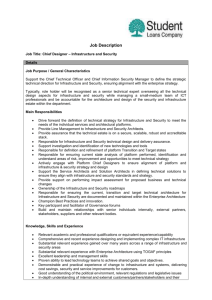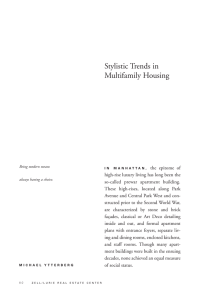Diablo Valley College
advertisement

History of Architecture: Early Civilizations to Middle Ages Instructor: Syllabus Daniel Abbott Office Location: ET 119D Office Hours: Monday & Wednesday 10:00-11:00 Tuesday and Thursday 1:00-2:00 E-Mail & Phone: By Request. All questions, concerns and discussions should be conducted in class, or in person during office hours. Please see your professor if you need contact information regarding e-mail or phone for specific purposes which may arise in the course. You are encouraged to visit your professor during office hours to discuss your progress in the class, your work or interest in architectural history. Course Content Units: 3 Prerequisite: None Recommended: Eligibility for ENGL 122 or equivalent Course Description Architecture and urbanism from prehistory to the Middle Ages. Social, cultural, and physical conditions that influenced the built environment in the Mediterranean region, Europe, Asia, Africa, and Pre-Columbian Americas. Topics include early megalithic tombs and structures, Native American dwellings, architecture of Egypt, Mesopotamia, Persia and the Middle East, early civilizations of the Aegean, temples and cities of Greece, architecture and engineering of Rome, and early medieval structures after the fall of Rome. Notes ARCHI 156, 157 and 158 may be taken in any order. Class Schedule: Monday & Wednesday, 11:00 - 12:15 pm Recommended Texts: Buildings Across Time Moffett, Fazio & Wodehouse Analyzing Architecture Leland Roth Required Texts: Architecture History Course Workbook Available at the DVC bookstore Architecture History Course Reader Available for short term check out at the DVC Library front desk Required readings are available in the library in a course reader that is held on reserve. There are multiple copies of this reader so that it is accessible to everyone. You will be required to go to the library on a weekly basis and read appropriate material for the class in order to answer homework and study questions related to the material being covered. Although study times vary between students, depending on your reading speed and how much time you like to take to study you will need to set aside an average of three to four hours per week for reading and homework for this class. History of Architecture: Early Civilizations to Middle Ages Syllabus Course Content: Eras or time periods to be studied in chronological order are as follows 1. Prehistoric Architecture Biskupin Stonehenge Newgrange Menhirs and Tumuli 2. Native American Architecture North American building types Latin American structures and buildings 3. Architecture of Mesopotamia Babylon Ziggurats 4. Egyptian Architecture Mastaba tombs Pyramid development Obelisks Rock-cut tombs 5. Persian Architecture Persepolis Tombs of Darius 6. Minoan and Mycenaean Architecture Knossos Tiryns 7. Greek Architecture Acropolis Parthenon Paestum Magnae Graceae 8. Roman Architecture Roman Forum and ancient monuments Theaters and amphitheaters Pompeii and Roman housing Roman settlements 9. Early Medieval architecture in Europe Romanesque Byzantine Monasteries and religious centers 10. The Middle East and Islamic architecture Iran India Turkey Moorish influences in Spain Student Assignments and Evaluation: 50% Midterm and Final Exam 25% Midterm Exam 25% Final Exam Preparatory tests, quizzes and discussions will be covered throughout the semester so you are well prepared for each exam. The workbook for readings and class notes that you have purchased in the bookstore will be allowed for both exams and questions on the exam will be taken directly from the class workbook. 50% Daily Participation Assignments in Class Weekly quizzes and participatory exercises based on required readings and lecture material will be given in class. These will serve to prepare you for the midterm and final exams and also as ways for you to study and test your retention of knowledge throughout the class. Extra Credit Occasional small assignments may be offered for extra credit. History of Architecture: Early Civilizations to Middle Ages Syllabus Class Guidelines All students who miss two weeks of class or two weeks of assignments will be withdrawn from the class at the discretion of the instructor. All students are advised to drop the course within the first 75% of the class, if this is your intention. All students are required to follow the Student Code of Conduct and related policies on Academic Honesty as published in the Diablo Valley College Catalog, College & Student Policies. All late work will be graded down by 10% per class. Make up tests must be completed the following class period. Students with questions regarding their progress in the class should arrange a time to meet with the teacher before or after class or during office hours. Questions related to final transcripted grades will only be responded to in person during the Fall and Spring Sessions only. Course Objectives Students completing the course will be able to: Speak and write effectively about architecture Employ basic methods of research for studying and analyzing buildings in history Describe, analyze and interpret architecture, landscape and the built environment Identify the impact of social, technological, economic and cultural diversity on the built environment Recognize Western and non-Western traditions in architecture Identify principles of order and structure that influence and inform environmental design Student Learning Outcomes Identify notable architects, design concepts, canonical buildings and precedents in architecture. Identify the historical and contemporary role of architects in the profession and related design fields. Describe parallel and divergent canons and traditions of architecture, landscape and urban design. NAAB Outcomes The following outcomes are required for schools adhering to standards set by the National Architecture Accreditation Board Identify notable architects, design concepts, canonical buildings and precedents in architecture. Identify the historical and contemporary role of architects in the profession and related design fields. Gather, assess, record, apply, and comparatively evaluate relevant information within architectural coursework. Understand parallel and divergent canons and traditions of architecture, landscape and urban design including examples of indigenous, vernacular, local, regional, national settings from the Eastern, Western Northern and Southern hemispheres in terms of their climatic, ecological, technological, socioeconomic, public health and cultural factors Understanding of the diverse needs, values, behavioral norms, physical abilities, and social and spatial patterns that characterize different cultures and individuals and the implication of this diversity on the societal roles and responsibilities of architects.









